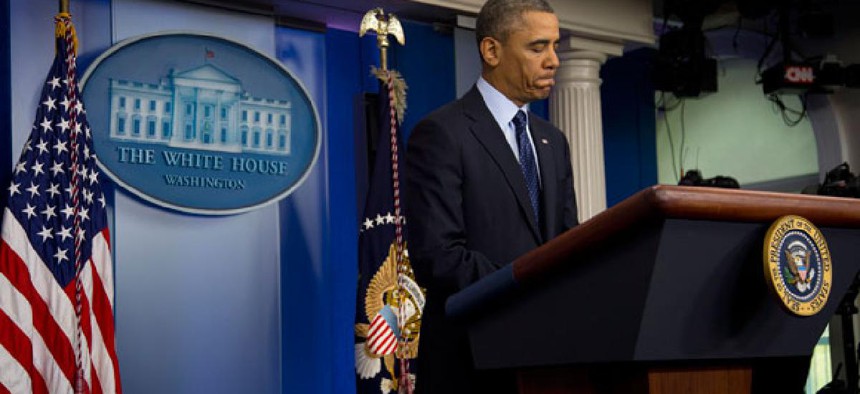
Carolyn Kaster/AP
Obama Issues Order Implementing Sequester
Now the process begins of implementing the cuts.
In the end, the long-feared sequester of federal funds came swiftly and quietly.
On Friday evening, President Obama issued an order putting sequestration into effect. He was required by law to do so by the end of the day in the absence of a congressional agreement to stop the $85 billion in across-the-board-cuts.
"By the authority vested in me as President by the laws of the United States of America, and in accordance with section 251A of the Balanced Budget and Emergency Deficit Control Act, as amended (the 'Act'), 2 U.S.C. 901a, I hereby order that budgetary resources in each non-exempt budget account be reduced by the amount calculated by the Office of Management and Budget in its report to the Congress of March 1, 2013," Obama's order stated.
Funds subject to sequestration were listed as "new budget authority, unobligated balances of defense function accounts carried over from prior fiscal years, direct spending authority and obligation limitations."
In OMB's report to Congress on the sequester, the agency's acting director, Jeff Zients, said OMB had calculated that over the course of the fiscal year, the sequestration requires a 7.8 percent reduction in defense discretionary funding and a 5 percent cut in non-defense discretionary spending. But he said that because the cuts are spread over seven months instead of 12, the effective reductions are 13 percent for defense and 9 percent for domestic agencies.
"The cuts required by sequestration will be deeply destructive to national security, domestic investments, and core government functions," Zients wrote in a letter to House Speaker John Boehner, R-Ohio. "While the Department of Defense will shift funds where possible to minimize the impact on war-fighting capabilities and critical military readiness, sequestration will result in a reduction in readiness of many non-deployed units, delays in investments in new equipment, cutbacks in equipment repairs and needed facilities maintenance, disruptions in military research and development efforts, significant reductions in weapons programs, and furloughs of most civilian employees for a significant amount of time. Sequestration will also undermine nondefense investments vital to economic growth, threaten the safety and security of the American people, and cause severe harm to programs that benefit the middle class, seniors, and children. According to analysis by outside experts, sequestration would reduce real GDP growth for 2013 by 0.5 to 0.7 percentage points were it to continue for the rest of the calendar year."
In a statement, Boehner said, “For 16 months, President Obama and his party in the Senate knew that unless they acted, the president’s sequester would go into effect on March 1. Still, despite the House doing its part on two separate occasions over 10 months, Democrats have yet to pass a plan of their own. So to my dismay, the sequester -- a series of mandatory spending cuts proposed during by the White House during the debt ceiling talks of 2011 -- went into place as scheduled. And it will be here to stay until the president and the Democratic-controlled Senate decide to join us in focusing on more responsible spending cuts to replace it."







